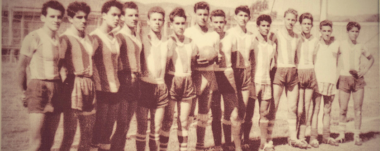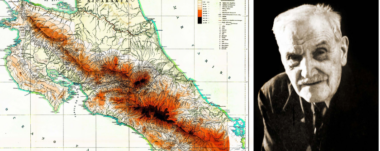Abolition of the Army and Defense of Costa Rica’s Sovereignty
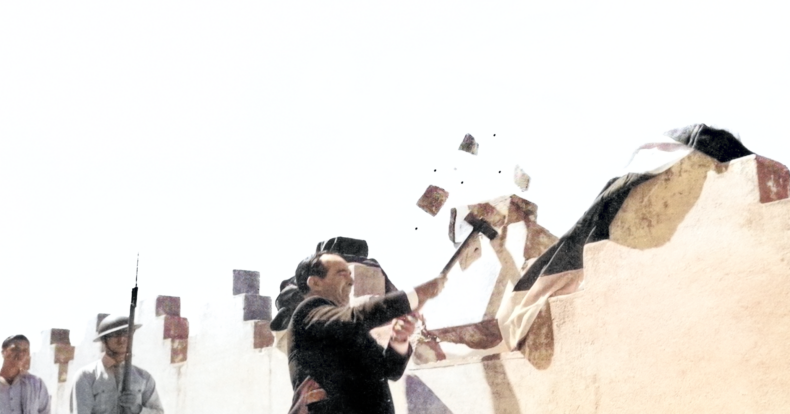
Abolition of the Army and Defense of the Sovereignty of Costa Rica.
The first of December 1, 1948, the President of the Government Junta, Mr. José Figueres, smashes one of the rocks of the Bellavista Barracks to knock it down and thus, in a symbolic act, decrees the abolition of the Army, beginning the transfer and remodeling of the old Bellavista Barracks to turn it into what would become the current National Museum of Costa Rica.

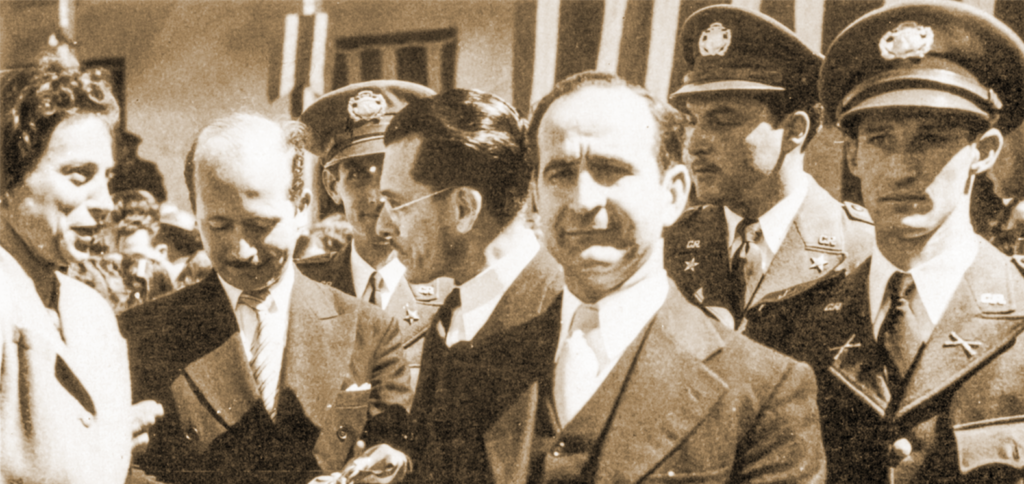
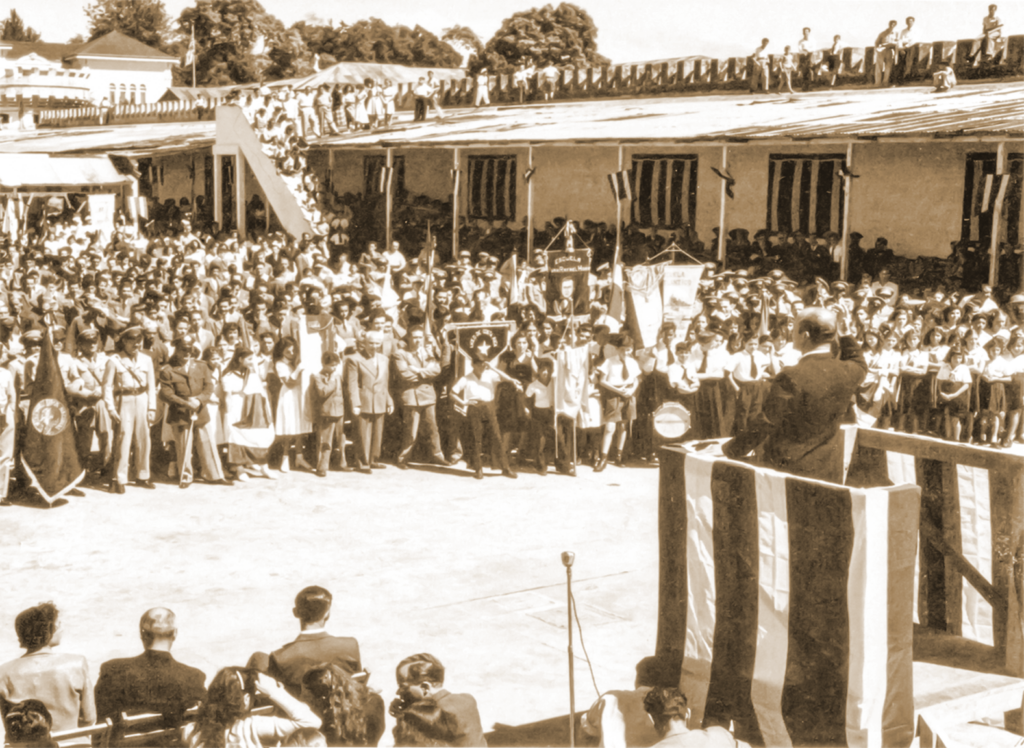
On December 1, 1948, I smashed a wall of the Bellavista Barracks to symbolize the elimination of the vestige of Costa Rica’s former military spirit and handed over the facilities to house a Museum of Anthropology that today continues to radiate culture.
On the 11th of that same month and year, by decree N° 749, the Founding Board of the Second Republic transferred the Bellavista Barracks to the University of Costa Rica so that the National Museum could be installed there. But it was not until October 31, 1949, in Act N° 178, that the approval of the constitutional article that suppresses the Army as a permanent institution and creates the Civil Police, for the protection of public order, appears.
Abolition of the Army
Something very important is that on that day, Don José Figueres Ferrer, better known as Don Pepe Figueres, abolished his Army, that is, the Army of the Second Republic or National Liberation Army, but never the National Army of Costa Rica. The truth is that on December 1, 1948 the National Army of Costa Rica was never abolished. That has to be very clear, because it has been misinterpreted to this day.
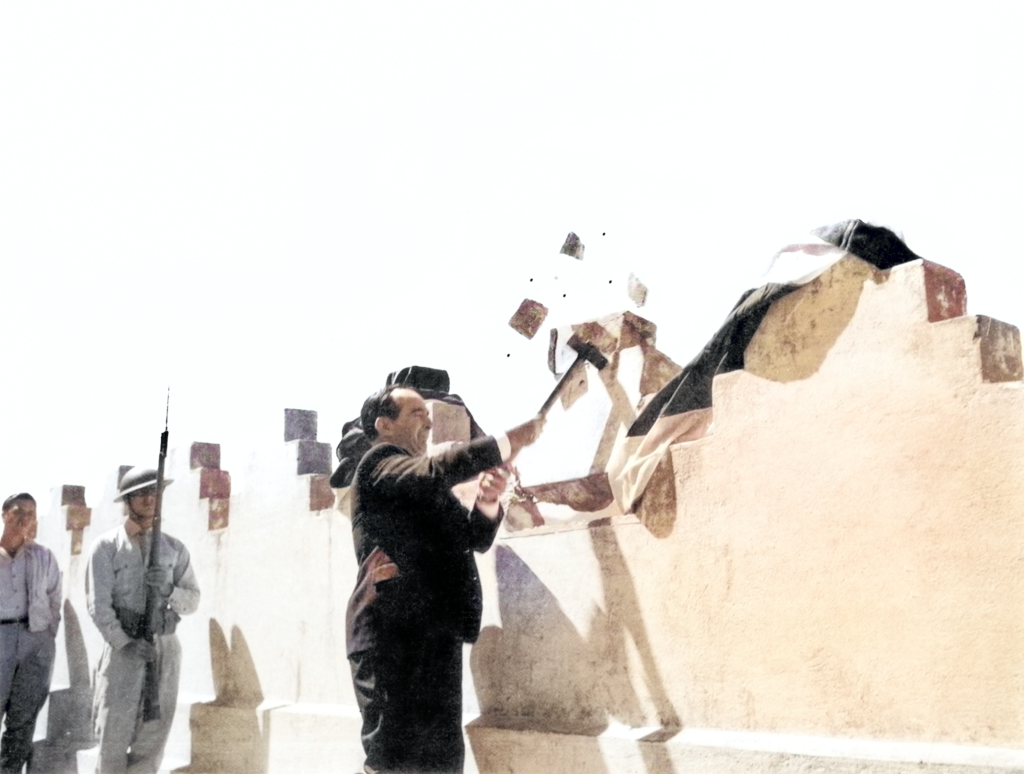
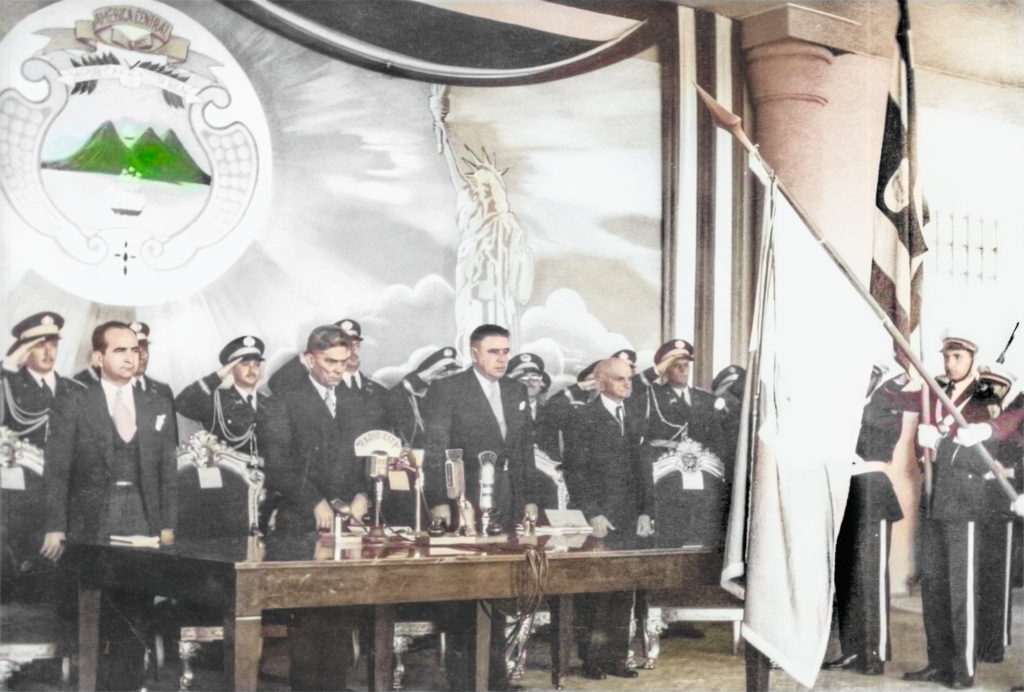
After having eliminated the Army, the handover is given to the President of the Republic on November 8, 1949, and we see President Don Otilio Ulate Blanco after having pronounced his oath to the country and assuming the presidency of the republic. From left to right: José Figueres, Dr. Marcial Rodríguez, President of the Constituent Assembly, Otilio Ulate and Jorge Guardia Carazo, President of the Supreme Court of Justice. Interestingly, Mr. Ulate is standing below the drawing of the Statue of Liberty. The young cadet holding the flag is Abel Pacheco E.
Invasion from Nicaragua to Costa Rica in 1948
As a proof of this, on December 8, 1948, elections were held for a National Constituent Assembly of 45 deputies, who would have the responsibility of drafting the new Constitution of Costa Rica. But that same day, the Junta informed the country that from Nicaragua, and with the support of the dictator Anastasio Somoza García together with Rafael Ángel Calderón Guardia and Teodoro Picado, they had organized a military force to invade Costa Rica, overthrow José Figueres and take over the government by force.
Abolition of the Army
The invasion was scheduled for December 8, coinciding with the constituent elections, but practically all of Nicaragua and even some towns in the north of Guanacaste were paralyzed by the famous “Gritería”, coinciding with the feast of the Immaculate Conception of Mary. However, the invasion was delayed for 4 days. It was on December 12 that we woke up with the news that we had been invaded and the enemy was advancing without any foreseeable obstacle towards Liberia. The Junta declared a state of national emergency, Don Pepe Figueres assumed supreme command of the loyal forces and sent troops to Guanacaste to counterattack the invading forces.
That same December 17, 1948, a demonstration was held by the Costa Rican people in support of President Figueres and the Government Junta on the occasion of the invasion of Costa Rica by Nicaragua.
On December 17, Don Pepe Figueres leads a battalion of volunteer government forces, who, with other members of the Revolutionary Junta, enter Liberia, Guanacaste, to attack the invading forces. That same day an improvised historic meeting of the Government Junta is held at the Liberia Barracks to plan the military strategy to defend Costa Rica.
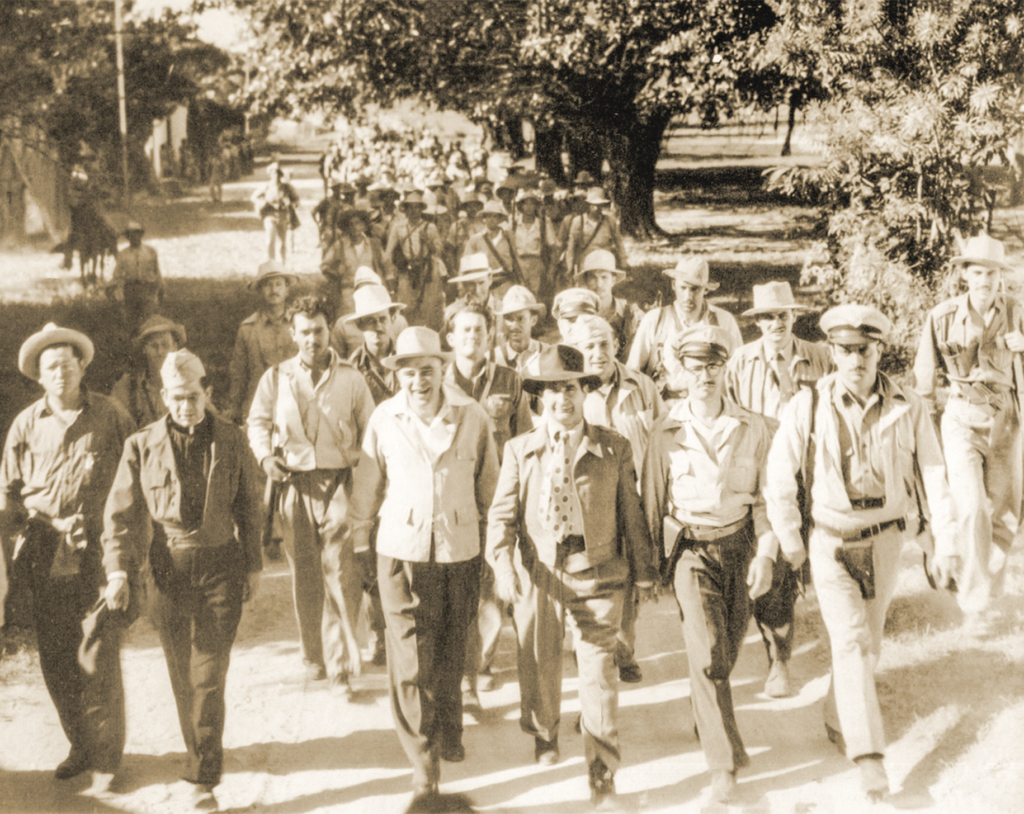
On the left, in this historic photograph, we see the Costa Rican troops entering Liberia, December 17, 1948. From left to right: Father Benjamín Núñez, Don Otilio Ulate Blanco, Don José Figueres Ferrer, Don Gonzalo Facio, Don Bruce Masís (behind Don Otilio in the third row) and, on the right, photographer Don Francisco Coto.
On December 19, 1948, members of the Organization of American States’ Commission of Inquiry make their way down a dusty trail to the city of Liberia from that city’s airfield. President Figueres leads the group escorted on the right by a soldier with his rifle.
At December 22, after a fierce and decisive battle, El Amo was taken and two days later, La Cruz also fell into the hands of the Costa Rican Government. The invaders fled to El Murciélago and in passing murdered Father Jorge Quesada González, Antonio Facio Castro, Jaime Gutiérrez Braun, Óscar Mainiere Ibarra, Jorge Manuel Delgado Flores and Edgar Ardón Brenes, none of them combatants, they were all collaborators of the Costa Rican Red Cross.
The OAS ordered Costa Rica and Nicaragua to “immediately suspend hostilities” and organized an International Military Commission to appear in the field to see that the order was complied with. However, after the defeats of El Amo and La Cruz, the invaders in their flight surprise the Government garrison in Puerto Soley and assassinate Eloy Morúa Carrillo, Bernal Vargas Facio, Efraín Roldán Pérez and Víctor Manuel Víquez Arguedas. Another 35 men were captured, taken to Nicaragua and later released and returned to Costa Rica. As a historical testimony of what happened in El Murciélago, a commemorative plaque was later unveiled.
The Cardonazo
In the back you can see the front of the Universidad Santo Tomás; later the Banco Anglo Costarricense and today the Ministry of Finance. This photograph on the right was taken from the rooftop of the Gran Hotel Costa Rica in San José.
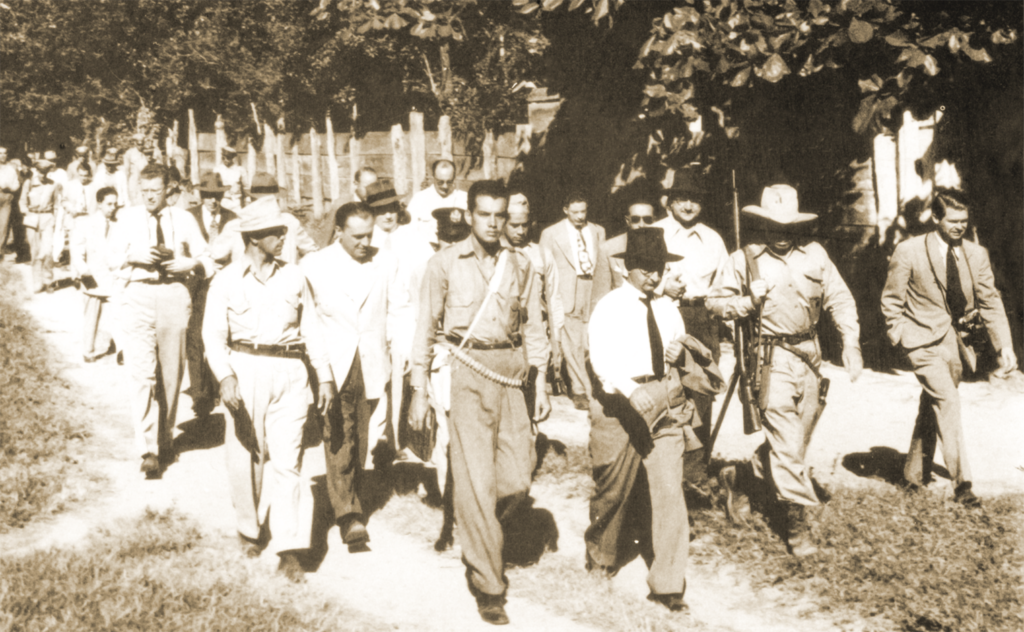
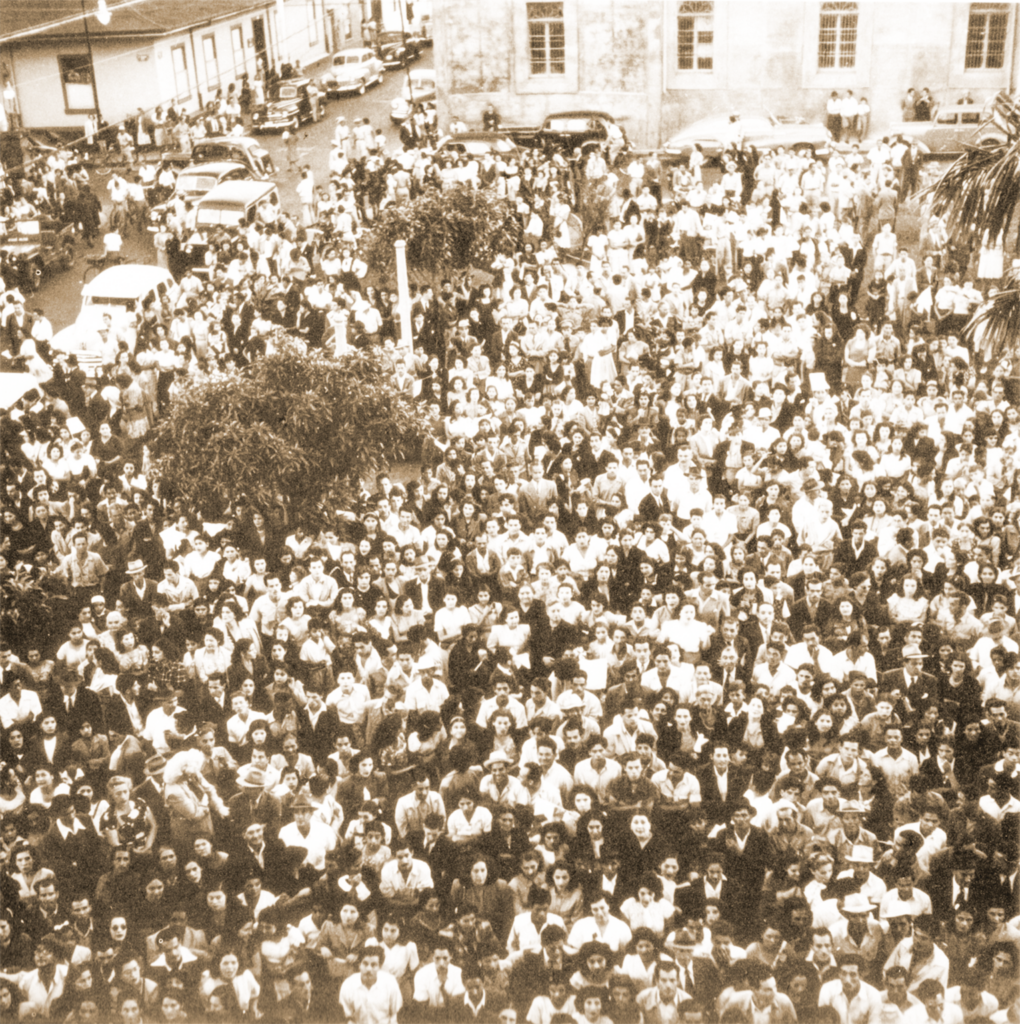
The pact was fulfilled, but in addition, Figueres himself carried out a series of social reforms also of a socialist nature. Two in particular provoked great disagreement from the conservative groups of the hardest and most oligarchic right wing: the nationalization of the banks and the 10% tax on capital. Cardona, supported by these groups, decided to stage a coup d’état to depose Figueres, taking the Bellavista Barracks along with several military rebels. Cardona demanded, in addition to the repeal of these laws, the resignation of the ministers Alberto Martén of Economy and the priest Benjamín Núñez of Labor.
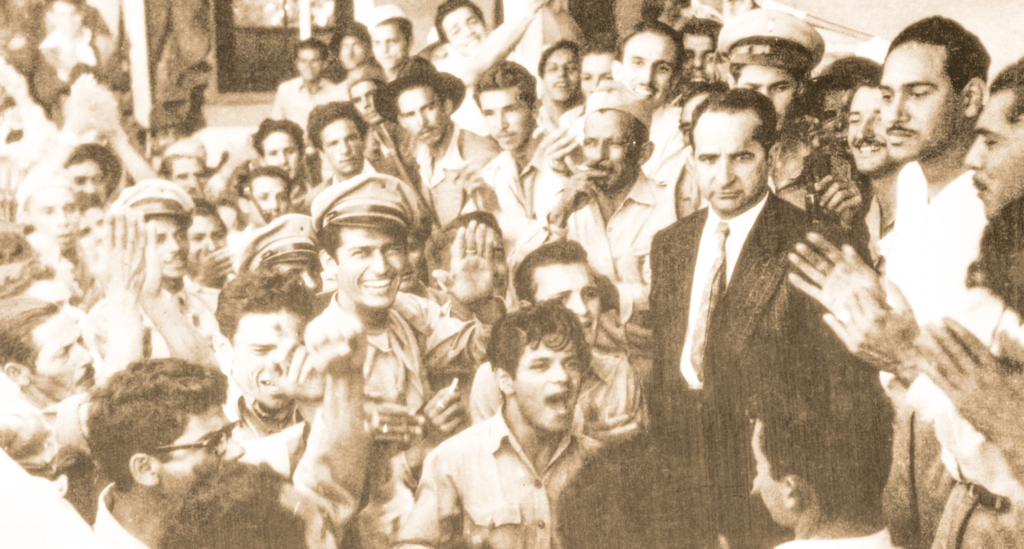
The government responded immediately by surrounding the Artillery Barracks, where Edgar Cardona was located, and the Bellavista Barracks, with Fernando Figuls Quiros, who had also taken up arms, together with loyal military volunteers such as Frank Marshall Jimenez. There was a slight confrontation between both sides inside the facilities, which allowed the entrance of Figueres himself to negotiate. José Figueres ordered the surrender, which the rebels refused. After several hours of siege, they finally surrendered at 3 o’clock in the afternoon of April 3, 1949, with a toll of nine dead and thirty wounded.
Abolition of the Army
On April 4, 1949, at the end of the armed movement known in Costa Rican history as “El Cardonazo”, Don Pepe Figueres arrived once again at the Bellavista Barracks, surrounded by some of his men loyal to him and to the Founding Government Junta of the Second Republic. They defeated Colonel Edgar Cardona, head of the rebellion, who held the position of Minister of Public Security and had also been one of the bravest and most distinguished combatants of the triumphant army in the Revolution of early 1948.
Navigate articles



